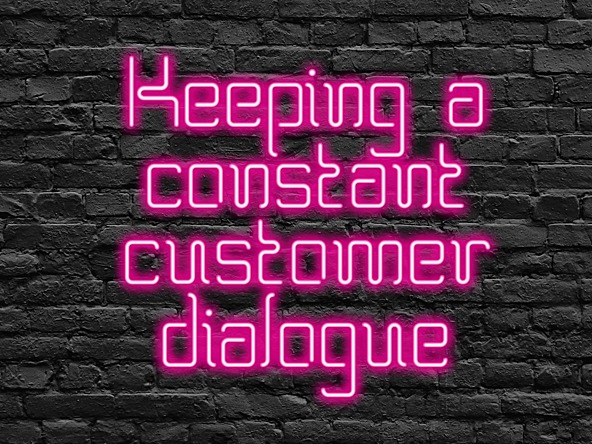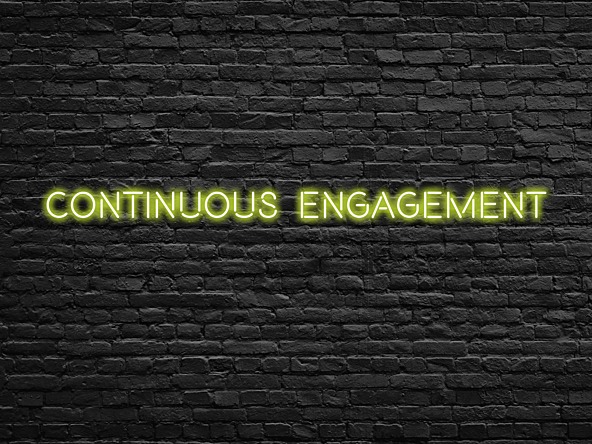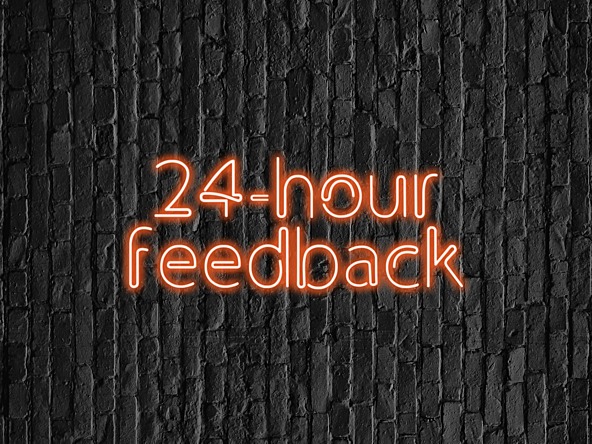Keeping a constant customer dialogue

“We are at the point now that insight can be fast, cheap and good. It’s no longer the case that we can have only two of the three,” says Yvonne O’Brien, until 2017 the chief data and insight officer for Havas Media Group.
Excited by the potential of the applications that can create real-time, continuous customer dialogue, O’Brien has decided to work with the innovators who are creating them. “Insight needs to evolve faster, and look at new data sources. These can come from social, from CRM, but – at the moment – there is a degree of methodological purity that holds the research industry back,” she warns. “Some of the new entrants are much more nimble, and what they are doing is easier for clients to understand.”
Innovative self-service, tech-driven research methods such as webcam interviewer Voxpopme or online research tool ZappiStore have quickly moved to the mainstream, but both are less than five years old. When ZappiStore launched in 2013, CEO Stephen Phillips joked that he could become “the most hated man in research”. Instead, the company now serves clients and agencies in 36 countries, and works with many of the more established research companies.
This has mainly been driven by a shift in the centre of gravity of insight. For many clients, this means finding out something about now, that they can act on today. CRM, social data and the insights of operational data have shown that near real-time response is possible.
Agile marketing and micro-targeting mean there are more parts of the client organisation that need rapid, integrated sources of customer data. The increasing influence of job roles such as chief customer officer is also driving organisational reform for ambitious clients. “A lot of this is about connectivity between sources of data,” O’Brien says. “This is really interesting and challenging work… and insight companies don’t want to be given a brief to fulfil; you should want to be at the table deciding what the brief is.”
The growth in demand for this type of continuous insight has been sudden and rapid, and fuelled by changes in client needs, as well as the availability of technology. Paul Twite, managing director for Europe and MENA, for ITWP and Toluna, dates the change in client expectations to around 2016 – at which point interest in the digital platform that Toluna was offering suddenly increased.
Big brands have embraced the need to move at speed, Twite argues, but demand for Toluna’s QuickSurvey and QuickCommunity tools has also been driven by a democratisation of the use of online, self-service research tools across an organisation. For example, Procter & Gamble’s brand managers and R&D teams recently started recommending Toluna’s platform to each other, because they all wanted 24-hour feedback on their initiatives to iterate quickly or spot faults.
“Sometimes we’re dealing with different bits of the organisation,” says Twite. “It could be brand owners, who used to have to go to internal research teams and ask a question, then wait for research to validate the answers, to mitigate risk. Now they are saying if they get customer feedback in real time, from any source – it could be social media, a platform, research, or a customer community – they would be better off. Most customers are happy to have 85% of the information on time, rather than waiting for 100%. The idea of ‘fast fail’ has become commonplace and helps to propel businesses forward.”
In Twite’s experience, however, it has taken longer to convince the research industry to embrace these tools. He recalls that when his CEO, Frédéric-Charles Petit, first started evangelising about the real-time analysis tools Toluna was providing, it was tough to convince customers in the research business – who make up about half of Toluna’s revenues – to consider them.
Twite recalls: “He [Petit] said, ‘I can create automated tools so, in an hour, you could have 1,000 responses and the data could be analysed in real time’. But customers said, ‘that’s nice, but we’ll have it the old way, thank you. That’s really interesting, but actually we’ll just go back to doing our own fieldwork’.”

Bolder, faster, more creative
Clients are now putting pressure on established agencies to change what they offer. When Caroline Frankum joined Lightspeed as global CEO in April 2017, her remit was to adapt the company to the changing expectations of its clients – partly because it identified that more client insight budgets were no longer protected. The company launched a three-year transformation plan in June 2017.
“We have been a very successful panel company for 20 years, but we need to be much bolder, much faster and much more creative in how we connect consumers and citizens with clients,” Frankum says. “There are people, like management consultancy firms, that are also starting to eat our lunch, particularly in the digital space. Deloitte’s digital transformation business is the smallest part of its offer, but it is the fastest growing.”
But what will Lightspeed do? Frankum argues that it must make much more use of technology. An early example is the LifePoints mobile app, launched in the US in 2017 and now globally, which combines surveys, gamification, engagement, polls and a community, as well as passively collecting information through geo-sensing for users who opt in.
“Instead of saying, ‘we want you to fill in a survey, when it suits us, about a retrospective brand experience that we want to talk about’, we’re saying, ‘earn points to live your life; if you let us collect information about you, we will reward you for that’,” says Frankum.
“Brand tracking – because it was the most complicated research and the most time-consuming – was always the most expensive. Our brand-tracking clients like LifePoints because it means they can cut their traditional tracking survey down to 10 minutes, and dip in and out with LifePoints to give the real-time insight that they need. If a competitor suddenly changes strategy, a monthly brand tracker wouldn’t pick that up. A LifePoints client, however, can ask respondents from the tracking survey their opinion on it as it’s happening.”
In 2017, Lightspeed also created the Gravity Network, a group of media, data and CRM specialists with which it will create on-demand and digital services. Examples are ZipLine, a data-analytics platform, and Fulcrum, a marketplace for programmatic sample data.

While Lightspeed will not abandon its heritage in double opt-in panels, it is recruiting managerial talent to drive change. In May 2017, Hannah Soar was recruited as director of business transformation; then, in September 2017, Angie French – who worked at programmatic specialist Xaxis and, before that, Microsoft – joined as EMEA CEO. “She has a strong tech-based background. She’s a breath of fresh air in helping our more traditional panel people get up to speed with this new world,” says Frankum, who admits that, when French joined, some Lightspeed staff were nervous about embracing its new entrepreneurial side, and were scared to make mistakes.
“For traditional researchers, an uncertain debrief, or an uncertain recommendation, is never a good thing. Now we’re saying, ‘there’s lots of uncertainty, let’s embrace it, learn from it and move with it’,” she adds.
Research doesn’t get much more traditional than Simmons Research, which proudly boasts that it has ‘been documenting the lives of American consumers for over 60 years’. Its syndicated National Consumer Survey has been hugely influential as a reference for the changing preferences of consumers throughout that time. So it’s not the first name you would imagine would be attracted to the Insights on Demand Consortium; nevertheless, it is one of the founder members.
Andrew Feigenson, Simmons’ chief executive, joined the company in November 2017, after running Nielsen’s digital organisation, where he launched products such as Digital Ad Ratings, and acquired eXelate and Vizu, two edtech start-ups that use phrases such as ‘agile’ and ‘real time’.
Part of Feigenson’s job is to put more real-time agility into Simmons. “One of the first things we did was decide that a lot of the data we collect needs to be in a digital form, so it can be always on… we’re going to start being able to pick up quick-moving trends and quick-changing consumer habits.”
Clients’ research departments are having their funding cut, Feigenson says, in favour of data scientists and technology providers, who promise quick insights that will allow brands to respond rapidly and continuously to customers. The shake-up at Simmons involves new data, as well as new ways of working. “We’re starting to bring in much bigger data sources that let you get deeper than ever before. So if you’re a retailer trying to figure out how to make decisions in a micro area, that’s a great way to use bigger, faster data sets. But it’s not the speed of the data, per se – it’s how quickly people can make sense of it,” he says.
Feigenson argues that syndicated research has expertise in methodology and transparency, and will increase their value if they acquire skills in joining their existing data to external data sets for quick insights. He isn’t planning to abandon Simmons’ heritage as a survey company, but, instead, use the breadth of its data so clients can have confidence in comparing fluctuations to long-term trends. He also intends to join its first-party customer data to the representative data that Simmons has been generating for six decades. “We maintain the representative group that we have, the breadth of proprietary data and the transparency around all that, but then start partnering or acquiring much bigger data sets.”
Does this give Simmons a unique selling point? “That’s a good question,” Feigenson says. “Ask me again in two months.”

New ways of working
Whatever the research provider offers, an impediment to helping clients create a continuous customer dialogue will be that agencies must also restructure to support an always-on client relationship. If the client is using agile marketing techniques, agencies may need to create more agile working practices to match their needs.
While ‘agile marketing’ and ‘lean innovation’ are overused buzzwords, many organisations have found that the techniques they represent are valuable, and they have the ambition to adopt them. There’s a flaw in how they are currently used, however; there’s no point being agile, or planning to constantly iterate, unless you are basing these actions on reliable, rapid customer feedback – and many innovators are struggling to access this. An example is the ‘fast fail’ that Twite’s customers want to know about.
For instance, NewVantage Partners has long conducted an annual survey of 57 large firms on their use of data. While three-quarters of the sample claim to have found value in using data to make better decisions, fewer than a third think they have succeeded in transforming the way decisions are made to take advantage of insight for innovation.
This can be quite simple. Tom Agan, a partner at Prophet, a global brand and marketing consultancy that specialises in agile techniques, researched innovation at 30 global brands, such as Procter & Gamble and Kraft. He found that those that had routine formal analysis of the customer response to their innovations made 100% more revenue from new products, and even more if an outside agency led the process.
A research provider that has structured itself to give continuous, iterative insight is InSites Consulting, whose clients include Unilever and Coca-Cola. It has structured client engagements this way ever since it was founded as “a crazy blend of academic visionaries, passionate marketers and research innovators”.
Joeri Van den Bergh, managing partner, explains that having a day-to-day relationship is “not just to cater to their needs for agility, but also to provide a better understanding of the daily lives of consumers. We believe projects and clients benefit from iterative and consecutive learning.” While some of the methodology is recognisable in any agency – surveys, qual research, reports – two aspects are unusual. The first is the way in which the work is commissioned, and projects or tasks evolve out of a continuous engagement.
“Our interaction with clients has switched from the classic briefing-planning-commissioning way of working towards a weekly heads-up meeting where clients share their projects and discussions. Often, this won’t lead to formal commissioning – with briefings and request for proposals (RFPs) – but it can lead to an explorative brainstorm, or to a concrete topic guide or questionnaire proposal,” Van den Bergh explains.
The second unusual aspect is the way the work is done. Van den Bergh is one of several agency bosses in this feature who looks for ‘T-shaped’ members of staff, trained to have broad project-management skills, but also narrower implementation skills – people who can adapt to a different type of work depending on what needs to be done that day, based on agile processes. This means the teams are structured into fluid ‘squads’, with short, daily, stand-up meetings to adapt the squads to the job that needs doing.
Incorporating feedback from the client and learning from the research is a daily process. To make this work, the company uses automation to get rapid respondent feedback and to convey this to clients quickly. It uses AI and bots, for example, which save 80% of moderation time, according to InSites. Automatic PowerPoint reports take half the time to create than handmade reports.
Van den Bergh claims constant communication is the most appropriate response to the rapidly changing needs of consumers (he characterises this consumer trend as IWWIWWIWI – ‘I want what I want when I want it’, and says it applies to clients as well) and the pressure on brands to respond quickly, even with imperfect information.
“This has made it crucial for companies to shorten their product and innovation cycle, so we have to reduce the ‘total cost of insight’,” he says. “We tend to think agile methods are more appropriate for tactical research projects – and, of course, they are very useful when a client wants to have a fast, overnight reality check – but the iterative cycle of hypothesis testing, quick learning and testing again is also useful to improve long-term projects.”

Innovate or become irrelevant
Whether it’s helping to innovate, embracing bots and imperfect data, or adopting agile working, the need for a real-time, insight-driven customer dialogue will drive change in the research industry. While research has creative thinkers that most sectors would envy, it also has shibboleths and working practices that do not move at the speed of a start-up – or, arguably, even at the speed of their clients.
The founders of OnePulse (see panel, p38 ) were inspired to launch the app partly because, in their former jobs as management consultants, they helped their clients to use digital platforms to respond better to customers. When they commissioned research into the topic, they realised the researchers they had been working with made up the sector that wasn’t transforming quickly enough.
If continuous customer dialogue means incorporating data and skills that, traditionally, live outside the world of market research, it may also bring into the sector skilled people whose background is outside the industry, and who want to turn it on its head.
An example is Matt Gaffney, the CEO of four-year-old Branded Research – which has recently joined the Insights on Demand Consortium – who cheerfully concedes that he’s a start-up entrepreneur, rather than a researcher.
“This industry has, traditionally, been very slow-moving, and maybe that was OK,” Gaffney says. “But it’s certainly not OK any more and, frankly, it hasn’t been for a long time. Real-time insight, customer response, customer feedback and behavioural tracking isn’t new – it’s the nature of the world.
“There are a number of places from which to get this now that are not traditional market research companies. It’s a transformative time for the industry – and it’s time for the industry as a whole to respond.”
Branded uses APIs to deliver targeted samples in a programmatic way to insight providers, with customers both inside and outside traditional market research. For example, Gaffney will give samples for start-ups who deliver customer feedback using webcams or mobile surveys inside a web application. He is in no doubt that start-ups will take a slice of client business because they don’t have existing ways of working.
“If you look at the survey world, for example, there are agencies that have been doing tracker work on behalf of big brands, every quarter. They don’t really want to pay people to take the study. The study is way too long. It’s obnoxious to take it. It’s not really getting into the right hands.
“At some point, that agency has to sit with the client and say, ‘we need to change how we’re doing this’.”
Gaffney argues that researchers have to recognise the need for change: “Those agencies are scared to have that conversation, because it is an acknowledgement that the data they have been collecting for so many years maybe isn’t that hot.
“Somebody is going to enlighten your client,” he adds. “So innovate and adapt quickly – or you quickly become irrelevant.”
At Toluna, Twite is optimistic that research businesses will respond. “Some research firms have moved successfully to become trusted advisers to business decisions, such as which markets to enter, with which products, for which customer base,” he says.
“They are adding value and moving quickly, and some research businesses have been extraordinarily quick at reinventing themselves and targeting opportunities.
“Management consultancies are often seen as the next big thing. But there’s a real intersection between management consultancies and the big research firms.”
Social prediction
Tim Warner, vice-president of insights and analytics at PepsiCo, has challenged his insight team to uncover what he calls micro-trends – “things that are bubbling up, day to day, week to week”.
Identifying the trends is less than half the job, however, because many of them will not have any impact on PepsiCo’s business. “We see new trends and pockets of growth emerging quickly and continuously, but, in reality, only a few sustain growth and become important,” Warner says. “We have a strategic imperative to not only detect and respond to emerging trends faster, but also to be smarter in determining which to respond to and how.”
Black Swan Data is a UK-based data science specialist helping PepsiCo to do this. Its brief is to find the key topics and trends that will change consumer behaviour in the future – which it has done by analysing 198m historical data points from the previous two years, and by ingesting between 50m and 60m pieces of data a day from Twitter, Instagram, blogs, forums and reviews, as well as PepsiCo sales data. It uses a forecasting engine to predict the future demand for more than 1,000 ingredients, using customer views of 72 benefits, and 52 themes, in five of Pepsi’s markets.
Black Swan calls this process “social prediction”, to distinguish it from the social listening that has become commonplace. The differentiator is that Black Swan doesn’t rely on word frequency and sentiment analysis; instead, machine-learning algorithms predict future sales trends with less risk, helping its clients to direct their investments and R&D. The link with operational data makes the model more robust, and helps the data scientists to continuously test and refine the model’s predictions.
“People broadcast much more information,” says Steve King, CEO of Black Swan. “Will more or fewer people be talking about cumin in six months from now? We are listening to so many questions that we can build patterns from that data. We can observe the quality and type of conversations, and establish trends over time. And now we have so much historical data, we have a scientific measure of trends.”
Warner identifies real-time, online consumer conversations as a powerful tool to keep ahead of competitors, because it gives PepsiCo earlier warning of emerging trends – and opportunities to grow – than the insight tools he had used before. He calls it a “robust, always-on trend-detection engine”. “We can distinguish between the emerging trends that matter and the many that don’t, and scientifically predict which trends will sustain growth, versus those that will fade away.”
This way of working is changing Black Swan, as well as PepsiCo. “Originally, our model was open-ended and exploratory, and was project-based. But, in the past 12 months, that has turned on its head, because we offer a service and PepsiCo asks the questions,” King explains. “We realised that our output was identical to the sort of insight from surveys and panels. We have worked to map it to real business problems.” Now, more of its client engagements are continuous, packaged for self-service by its clients – almost data science as a service.
This has been made simpler by changes in the way Black Swan’s client base – which includes GSK (predicting flu outbreaks) and Tesco (when is the first barbecue weekend of the year?) – buys its services. “A year ago, we would be approaching the CMO, the CTO or the chief insight officer, and trying to build a robust sales model – which was a nightmare. But, increasingly, a client insights team is cross-functional,” King says. And is he happy to be paid for results? “We have three or four client relationships already that are results focused. That’s exciting for me, but maybe not so exciting for my procurement team.”
Continuous qual using bots
“Proper qual,” says Paul Hudson, CEO of FlexMR, “is moderated qual”. That hasn’t stopped him from investigating – and writing a white paper on – the potential of chatbots to create a continuous customer focus group.
But, Hudson says, this is far too labour-intensive to be practical – so can bots and artificial intelligence (AI) replace a human moderator?
What are you defining as ‘qual’ in this context?
A lot of people’s idea of online qual is just open-ended ‘why’ questions, done at scale. I am talking about doing it in a way that allows dialogue, with moderation. We believe that dialogue is the benefit. But traditional moderated qual with a human moderator is slow and takes time to organise, whereas organisations want DIY, control, speed and scale.
From your experiments, can a bot run online qual?
The first obvious stage has to be to programme the bot to ask a series of questions, just like a survey, and you can put logic between the questions. The next thing we could do would be a simple, real-time wordsearch. Just like a topic guide, I tell the bot to look for key phrases, and then say, ‘tell me more about this’.
This is useful, but it is not moderation?
In theory, it’s possible to build a chatbot that would have all the constituent parts to do basic moderation – but then you have to train it. The problem is that every subject we research is different, whereas every commercial chatbot that currently exists does the same thing over and over again. Even when you train a bot, there’s currently no AI in the world that can make a judgement; AI is working with rules and previous knowledge. Until you’ve got a form of AI that can make a judgement, you can’t replace a moderator.
Can we make a human moderator more efficient using bots?
My idea is that the human would become a metamoderator. We would pre-programme prompts and topics, like we do now. The chatbots would talk to hundreds of thousands of people over a week or two weeks, and the metamoderator can keep checking in and guiding the conversation. So you’re making a massive efficiency and you have still got a researcher – it’s just that the role of the moderator has changed.
You argue that even this step may be years away. Are there more immediate problems in continuous qual that a bot could solve?
Recruitment is a nightmare. It takes too long, involves too many resources, and costs too much. You could use an automated bot to recruit for continuous-dialogue research. Imagine that someone visiting a website answers a question, and says her experience was very poor. The bot pops up and says, would you like to join some research for me? It asks some screening questions and then a human moderator can pick it up. For qual, we shouldn’t be asking, ‘how do I make panel recruitment better?’ A better recruitment question is, ‘how do I make the dialogue continuous?’
OnePulse real-time responses
“Often, at an internal meeting, we say, ‘I wonder what people would think about that?’ – and I can whack up a question and then I say, ‘I can tell you what people will think’,” says Kathryn Jubrail, head of strategy at ODD, a creative agency that specialises in working with fashion brands.
ODD needs that sort of timeliness; it claims to be ‘informed by real-time cultural insight and data’, and it gets some of that insight by using an app called OnePulse, which is designed to get consumer responses in real time.
“We are a mobile-based market research platform,” says Achim Schauerte, the chief strategy officer at OnePulse. “The client platform is self-service, and they can set up mini surveys that we call ‘pulses’. They’re up to three questions long – very short, quick, snackable for the users.”
Words such as ‘research’ and ‘survey’ are avoided when pulses are sent to users, for whom OnePulse is seen as a sort of fun social network, sharing quirky data. OnePulse’s internal research shows that 77% of respondents don’t take part in any other market research, and 82% don’t give opinions in social media.
Users earn small rewards and games, and the platform has quickly attracted 80,000 people in the UK (the US version launched at the end of 2017 ). The demographics of the panel are slightly skewed to young users, Schauerte says, but it is large and diverse enough that he can deliver representative samples in targeted segments to clients in near real time. “If you want 100 responses, it could be in two, three minutes,” he says. “But 1,000 responses could take 10 or 15 minutes.”
Schauerte developed his enthusiasm for OnePulse as a user, working in an advertising agency as a creative. “We used it in workshop scenarios with clients,” he says, “because it’s so quick you can have the workshop, develop a few ideas during the day, and say, ‘we’re just going to test it right now’.”
Jubrail has also been using OnePulse as part of the creative process. “As a strategist, it allows me to test, explore and quantify ideas almost as soon as they come into my head,” she says. “I am able to explore things I am reading, or things I instinctively feel – even things my mum says to me.”
This suits ODD’s way of working, which is dictated by the rapid turnaround and constant stream of new ideas that its clients need.
Even if there was the time to do a full survey on Jubrail’s creative ideas, it would be too costly. So, she will do a simple three-question test – for example, asking a brand-perception question, showing some creative work, and asking again.
The results are indicative, but they help ODD decide how to refine its ideas and they allow the client to be more confident when making a decision.
“There is a leap of faith with creative work,” Jubrail says. “Previously, it would sometimes come down to a subjective ‘we think this’ – and, if the client disagreed, it would be really hard to prove your idea was good, especially if you are showing work in progress.
“Being confident that the public understands your idea adds depth and, sometimes, a different angle. It means you can have more bravery, playfulness, wit or seriousness.”
JWT Elastic generation
When J Walter Thompson Intelligence wanted to produce the ‘Female Edit’ of its 2016 report into ageing, called The Elastic Generation, it used Sonar – an online tool from its in-house research team – to survey 248 UK women aged 53 to 72. It took off-the-shelf data from the JWT Women’s Index Study, a global quantitative survey of women aged 17 to 70-years-old, but it also needed to speak to women to get qualitative insights.
“Traditional qual research would have been great if we could have commissioned it,” says Sarah Tilley, a consultant in the Innovation Group at JWT, part of JWT Intelligence. Cost was a factor, but the turnaround time was short, and the nature of the insights it wanted to draw out meant focus groups might not achieve the depth needed in the time available. “Focus groups require facilities, plus all the time it takes to prepare and do them, and do the transcriptions. We wanted to get some quick insights. We also wanted to do it in a seamless way,” Tilley explains.
JWT used Toluna’s QuickCommunity to recruit 24 women in the target demographic for a week-long, online discussion panel. It seemed a risky strategy; if JWT’s hypothesis that the over-50s are diverse and dynamic was incorrect, an online panel would probably be the wrong methodology to learn insights from them – but it managed to get interesting insights in a fraction of the time that traditional methods would have taken.
Tilley singles out the adaptability as an unexpected benefit of an online panel. To accelerate insights, the moderators could generate a dialogue that would iterate and refine their requests as the work developed. “The next day, we could directly message them to ask, ‘you told us this – can you follow up on that?’,” Tilley says. “I was surprised at how interested the respondents were in having a conversation together. I wasn’t expecting that. When you are in a focus group, you know people will talk among themselves, but in this online group, people were asking ‘when is everyone coming back online?’. It was a community of friends who didn’t know each other. The respondents were everything we hoped for – we got great quotes.”
The Insights on Demand Consortium
In January, Toluna launched its multilateral group of individuals and companies, from all industries, to discuss research that is automated, self-service, and in near real time. The consortium isn’t a business alliance, but aims to be a forum for its members to focus on topics such as how to scale expertise, and the requirement for real-time consumer insight. It will also try to solve problems in providing this, such as the fragmentation of research tools and technologies.
Toluna stresses it is not a club of researchers. “This isn’t us trying to build something to sell,” says Paul Twite, managing director, Toluna, Europe and MENA. “This is us recognising that the industry has shifted. We decided to create a neutral ground for discussion, a segment that could include artificial intelligence businesses as well as research firms. It could include management consultancies and media agencies. The common theme is having a consumer or customer base that is moving at the speed of the on-demand economy. How do we, as a group of businesses and individuals, respond to those challenges?”
So far, Toluna and its sister agency Harris Interactive have been joined in the consortium by research companies, digital agencies, and some large clients, including Procter & Gamble, L’Oréal, Unilever and Nestlé.

We hope you enjoyed this article.
Research Live is published by MRS.
The Market Research Society (MRS) exists to promote and protect the research sector, showcasing how research delivers impact for businesses and government.
Members of MRS enjoy many benefits including tailoured policy guidance, discounts on training and conferences, and access to member-only content.
For example, there's an archive of winning case studies from over a decade of MRS Awards.
Find out more about the benefits of joining MRS here.













0 Comments